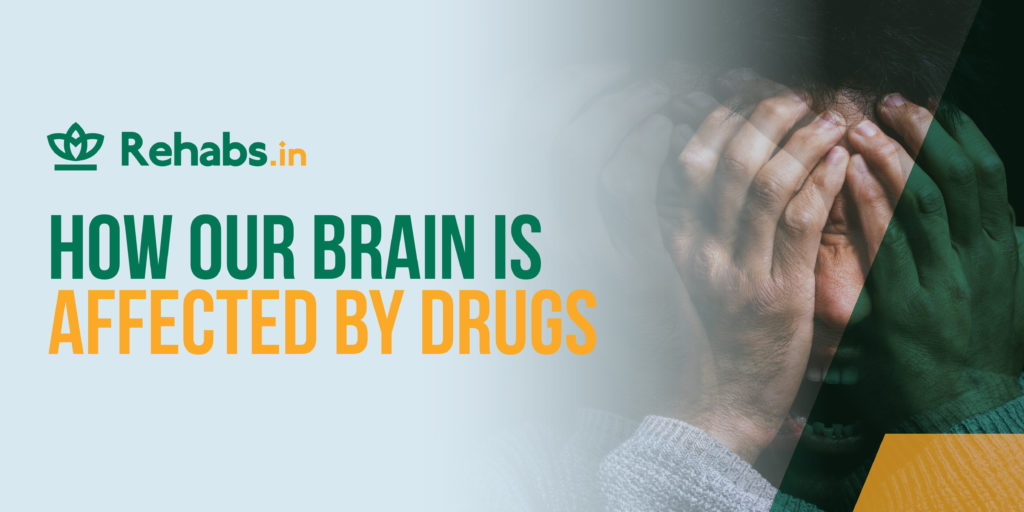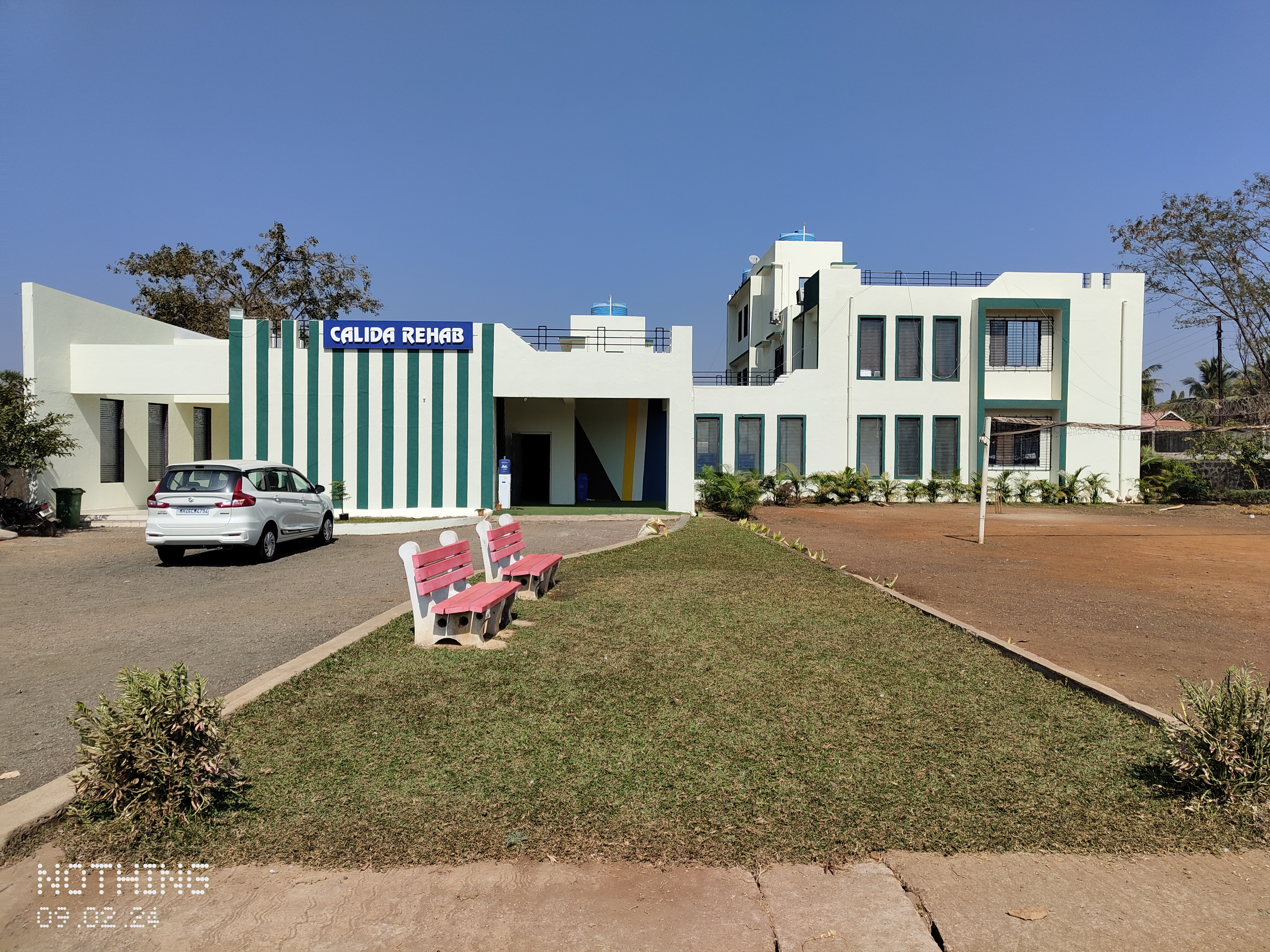How our brain is affected by drugs

Our brain is the most complex part of the body, and everything that we do is directed by the mechanism in our brain. To explain it better, if our body were a movie set, our brain would be the movie director, our internal organs, the producers and our external features and limbs would be the actors. So, if the movie director (brain) told the actor (limbs) to dance, the actor would dance; if it was told to do something harmful, it would do that. So, the question is, while it is normal for the brain to ask you to dance, is it normal for the brain to ask you to do something that might be harmful?
It is common knowledge that drugs affect people adversely. It’s not just physical but mental too. People with addiction problems may showcase behavioural traits that can be considered less than normal. However, it’s unfortunate that the media often portrays people with addiction problems as having criminal tendencies. This is often not true and works against people trying to get help for their addiction problems.
How a person with an addiction problem behaves is based on many factors. How long has the person been addicted? Whether the person has easy access to the addictive substance? The person’s personality type before the addiction? So, to know how drugs affect the brain, let’s start by understanding in detail how the brain works.
The Workings Of A Human Brain
The brain has often been compared to a computer. Whereas a computer has electrical circuits on its silicon chips which help with its workings, the brain has billions of cells, called neurons. These neurons have their own circuits and control the flow of information.
The brain isn’t just one mass but is divided into three parts; cerebrum, cerebellum and the brain stem. These different parts of the brain are connected with each other through circuits, helping the brain function together as a single unit. These different brain circuits have to coordinate with each other to perform specific functions. Networks of neurons fire signal backwards and forward to each other and to the different sections of the brain, the spinal cord, and to the nerves spread over the rest of the body (i.e., the peripheral nervous system).
Let’s explain this further with an example. Your nose is itching, so the neuron on the nerves around your nose will send a neurotransmitter to the next neuron through the synapse (the gap between two neurons). These neurotransmitters help transfer information by attaching themselves to the receptors on the neurons. These then give your hand the signal to itch your nose.
The Effects Of Drugs On The Workings Of The Brain
We have learned that everything that we do is through signals sent, received and processed by the neurons through the neurotransmitters. Drugs interfere with this very important and primary function of the brain. Few drugs like marijuana and heroin have chemical structures that imitate the natural neurotransmitter in the body. So, when a person takes these drugs, it activates the neurons in the brain by attaching itself to it.
Now, even though these drugs behave in the same way as the brain’s own chemicals, they don’t activate neurons in the same way as natural neurotransmitters and hence abnormal messages are sent through the network. Drugs such as amphetamine and cocaine can make the neurons release unusually high amounts of natural neurotransmitters and can also stop the regular recycling of these brain chemicals. This too intensifies or disturbs the normal communication between neurons.
This is the reason why under the influence of drugs, alcohol or even addictive habits, people may behave abnormally.
Which Parts Of The Brain Are Affected By Drug Use?
Drugs affect the way neurons transmit messages to each other, which can alter the different areas of the brain. This can hamper many functions that are necessary for survival, and it can also cause a compulsive need to consume more drugs, the hallmarks of an addiction problem. Let’s see which areas of the brain are hampered by drug use.
The Basal Ganglia – These areas of the brain form a key node of what is popularly known as the brain’s ‘reward circuit’. It is primarily responsible for triggering motivation that’s positive, including the feel-good effects of activities like eating, socializing and sex. This part of the brain is also responsible for creating habits and routines. Anything that gives us pleasure activates this circuit. For Eg., a chocolate bar will make you feel happy. How many times have you rewarded yourself with a chocolate bar for a job well done or after an intense workout? However, when this circuit is over-activated, it produces a feeling of intense joy or euphoria.
Drugs are not the only thing that over-activates this circuit. Anything that is done in extreme or repeatedly for pleasure can cause dysfunction. Gambling addiction, sex or porn addiction, video game addiction and even overeating can all lead to overstimulation of the ‘reward circuit’. It is important to note that with continued exposure, the circuit gets used to the presence of the drug or stimulant.
This reduces its sensitivity, and it becomes difficult for the brain to feel pleasure or desire for anything other than the preferred drug or stimulant. It also increases the tolerance for the substance or activity, and you’d require more stimulation to gain the same amount of pleasure.
Amygdala is one of the components of the limbic system and is in charge of emotions and behaviour along with memory creation. It controls behaviour and physiological responses to stressors like fear, stress and some drug-related stimuli.
The extended amygdala is involved in anxiety and stress. When the arousal from the drug starts coming down, the extended amygdala plays a role in creating feelings of stress, anxiety, irritation and unease. Also, with continued drug use, this circuit becomes increasingly sensitive. As the use turns into addiction, the person starts using drugs not to get high but to get temporary relief from the anxiety and stress.
The prefrontal cortex – The prefrontal cortex is the section of the frontal cortex that lies at the very front of the brain. It’s responsible for cognitive actions like planning, making decisions, solving problems, as well as exerting self-control over different instincts and impulses, and conducting plans with long-term outcomes in mind. This part of the brain is the last to mature, and hence adults display better self-control than children.
Teenagers and youngsters are more prone to drug abuse as their prefrontal cortex hasn’t matured enough to have strong impulse control. With continued drug use, this impulse control further reduces, and this circuit sends neurotransmitters to other circuits of the basal ganglia and extended amygdala to seek more drugs.
Some types of drugs like opioids also disturb the functioning of other parts of the brain, like the brain stem, which handles basic functions vital to life, including breathing, sleeping and heart rate. This interruption is the reason why a drug overdose can cause depressed breathing and death.
Why Do Drugs Give Pleasure And Why Do They Become Addictive?
The pleasure or euphoria obtained from using drugs is not fully understood by scientists yet. The most likely explanation is that when a drug is consumed, it creates an abnormal surge of chemical-signalling compounds like endorphins which are the body’s natural opioids, in parts of the brain’s reward circuit (the basal ganglia).
When you engage in a pleasurable activity like going for a hike in the mountains, endorphins and dopamine are released in your body, giving you a natural high. Thus, even though you are tired, when you reach the top, you feel extremely happy. This high is natural and produced in small bursts. The high from drugs, however, is extreme, and hence the pleasure experienced is also of a very high level.
This feeling of pleasure is how our brain identifies beneficial behaviour. Also, our brains are built in such a way that it tries to repeat or reinforce pleasurable activities. The neurotransmitter dopamine is fundamental to this. Whenever the reward circuit (the basal ganglia) is stimulated by an enjoyable experience, a surge of dopamine indicates that something significant is happening and that it needs to be remembered. This dopamine signal leads to deviations in neural connectivity, making it easier to repeat this activity over and over again, often without even thinking about it. This is basically how a habit is formed and, in the case of drugs, addiction.
It is important to note that even signals or situations in a person’s environment can trigger the reward circuit and create cravings. Continuing with the previous example of climbing a mountain, imagine you haven’t climbed a mountain in years because you live by the coast. However, you see a documentary on mountain climbing, and suddenly you feel an intense urge to go hiking to the mountains. This is a learnt ‘reflex’ and can stay with a person for a very long time. Hence, people with previous drug problems are asked to stay away from any environmental cues that can trigger the urge to take drugs.
You may wonder that if the brain provides a natural high for doing things like eating, sleeping, sex, and hobbies, why would one need an artificial high? The answer is simple. If a natural high is a small piece of chocolate, a drug high is a chocolate sundae with ice cream, sprinkles and a cherry on top. The pleasure is much, much more. Eventually, a person who is abusing drugs gets no pleasure from the body’s normal high and hence keeps seeking drugs.
Breaking The Addiction
Drug abuse can be a vicious cycle in the long run. One seeks the high from the drug, uses it, feels the pleasure, tolerance increases, the high comes down, there is withdrawal, the person seeks the drug again, and the circle continues. The brain is in a loop, and hence many of its other functions are disrupted. Addicts of any kind, be it drugs, alcohol, cigarettes, porn, video games, or gambling are in this loop of the high and withdrawal cycle. They are unable to think rationally and hence often make bad decisions. Hence, therapy is very essential as it is a disease that cannot be cured by a layperson. If you know someone who is addicted, then you can find them help through www.rehabs.in, a comprehensive database of rehab centres across the country.
Most therapies involve the monitoring of the brain and behaviour. Therapies like biofeedback therapy in combination with cognitive behavioural therapy (CBT), or dialectical behavioural therapy, have shown great results.
Consumption of drugs most definitely changes the way our brain functions which in turn changes the way we behave, think, act and behave. It may make you happy in the short run, but in the long run, it brings nothing but anxiety and stress. More often than not, drug addicts become physically unable to make the right choice because the brain cannot think beyond getting its next fix. Hence, it’s no wonder that a few people under the influence of addiction, especially those who are isolated and without help, will do anything to continue with their addiction, be it lying, stealing and worse, killing someone.
Even one-time use of most drugs can have an effect on our brain, so it’s best to always say ‘No’ to drugs.
Sources
https://www.ncbi.nlm.nih.gov/books/NBK537102/
https://www.neuroscientificallychallenged.com/blog/2014/5/16/know-your-brain-prefrontal-cortex
https://sencanada.ca/content/sen/committee/371/ille/library/collin-e.htm#b.%20%20Types%20of%20crime%20 committed%20by%20drug%20users

















